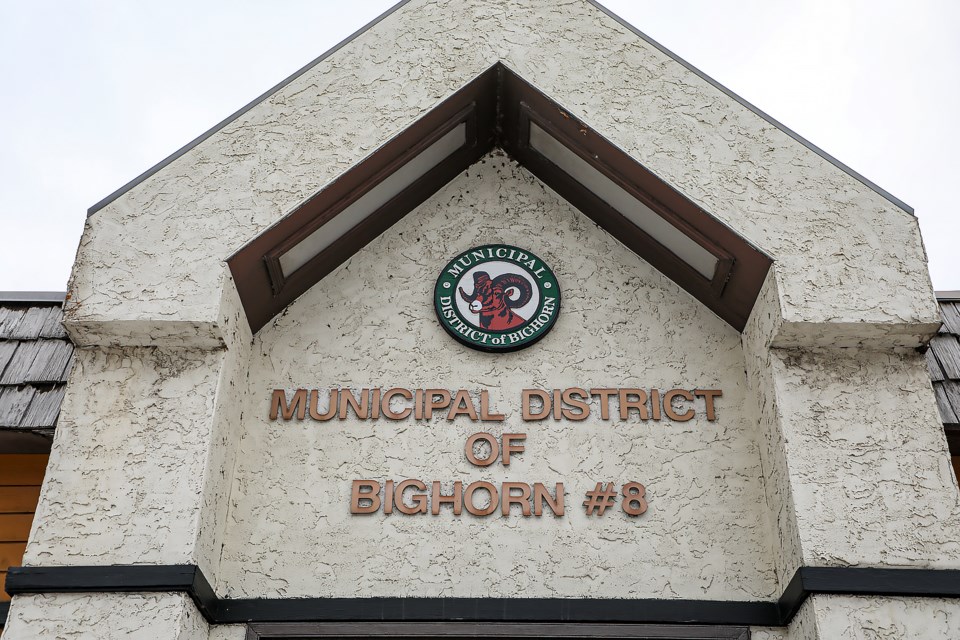MD OF BIGHORN – It would be riskier – and more costly – for the MD of Bighorn to not revisit its mutual aid agreement with Canmore than it would be to make recommended changes, according to a fire risk assessment prepared for the municipality.
Transitional Solution Inc.’s fire risk assessment made several recommendations to improve fire services within the MD when it was first presented to the governance and priorities committee (GPC) last month. Most talked about was seeking a better deal with its closest neighbour, which put a “significant” price hike on the communities’ mutual aid agreement renewed in 2022.
Judy Unsworth, project manager with Transitional and a former fire chief of 25-plus years, suggested hiring three full-time firefighters and a deputy chief to meet the growing needs of the MD, but also to give the municipality the ability to “barter” when the municipalities’ Intermunicipal Collaboration Framework is up for renewal at the end of 2024.
“We always need our neighbours in fire. … We really demonstrated that to ourselves in the north this summer when we had our wildfires when they were calling for resources from all over the province and absolutely outside the province,” said Unsworth to members of GPC at a Tuesday (Nov. 28) meeting. “I wouldn’t ever suggest you don’t have a mutual aid, but I’m thinking that this might position you a little better to manage how that mutual aid agreement looks.”
Addressing identified staffing vulnerabilities and having firefighters in place Monday to Friday, Unsworth suggested the MD would be in a better place to revisit its level of service and dispatch protocols with Canmore Fire-Rescue.
Working with the Town on a more precise apparatus callout fee-for-service structure and process for critical incident response was one idea explored.
“What we’re suggesting is that Canmore would only be called out to serious incidents. So, they wouldn’t be called out to everything that’s happening within the MD and that Exshaw would co-respond to critical incidents,” said Unsworth.
Other suggestions looked at an agreement for a flat rate cost for 50 calls into the MD annually, which is the average number Canmore Fire is called to. If that number is exceeded, a per apparatus or per hour rate could be considered.
Also reviewed was the potential for a true automatic aid dispatch to lessen Canmore’s time responding to calls in the MD.
“Both Canmore and Exshaw would be toned out at the same time. Obviously, Canmore could get there faster than Exshaw [depending on location], but Canmore would start the process to mitigate whatever was going on,” said Unsworth. “Exshaw would come in and supplement and eventually relieve Canmore and take over because you are the authority having jurisdiction, it is your land, and your ratepayers, so you would stay and manage that, and Canmore would turn around.”
Transitional recommended the MD review its response analytics to better determine staffing for times when firefighters are most needed. Exshaw Fire-Rescue Fire Chief Andrew Box, with ongoing 2024 budget discussions in mind, was quick to gather information to provide to GPC following Transitional’s presentation.
Data supplied by Calgary 9-1-1 revealed Canmore responded to the MD 181 times between October 2020-23. About 65 per cent of those responses were identified as lower priority calls.
“If we pull those alphas, bravos, charlies out from Canmore, we would immediately take care of two-thirds of the call response that Canmore is currently responding to,” said Box.
“Delta, echoes – because those are priority responses and people need assistance immediately – we’re not gonna get in the way of that. We’re rolling Canmore, we’re rolling ourselves.”
If it’s a prolonged event, Exshaw Fire-Rescue would either continue to assist Canmore on serious incidents in the MD or assume command allowing Canmore Fire to return to station.
“I think this would put us in a very good position hopefully with Town of Canmore administration that we come in and say, ‘look, we’ve taken the steps necessary to reduce our demand on your services significantly.'”
Box’s data also revealed, over the last three years, the MD had four paid on-call firefighters – the ideal amount to staff one fire apparatus – 69 per cent of the time. Without additional support from municipal staff who are also employed by Exshaw Fire, the MD is without four firefighters 41 per cent of the time.
Reeve Lisa Rosvold said the fire chief’s data was “staring her in the face,” where she had only heard anecdotally of staffing challenges.
“Thank you for connecting those dots for me,” she said.
Another identified vulnerability in the fire risk assessment was geographical challenges, with Exshaw Fire having to travel 20 minutes around the Bow River to access Lac Des Arcs, Dead Man’s Flats and motor vehicle incidents on the Trans-Canada Highway, hence Canmore’s ability to respond to these locations and Harvie Heights sooner.
For this, Transitional recommended the MD begin conversations with Alberta Transportation to discuss alternative access, such as a bridge over the river.
The risk assessment also looked at a potential fire station in Dead Man’s Flats to address this need and the growing population of the hamlet – which grew from a population of 125 in 2016 to 377 in 2021.
Rosvold suggested when the risk assessment returns to council for decision next month that it should include a recommendation that can be put forward in a motion, recognizing a need to potentially include additional funding in the budget for next year.
“I would like to see some type of action plan from administration when it comes to council so that we know what the next steps are and when we might expect to have that initial discussion on the level of service bylaw,” she said.
The Local Journalism Initiative is funded by the Government of Canada. The position covers Îyârhe (Stoney) Nakoda First Nation and Kananaskis Country.


